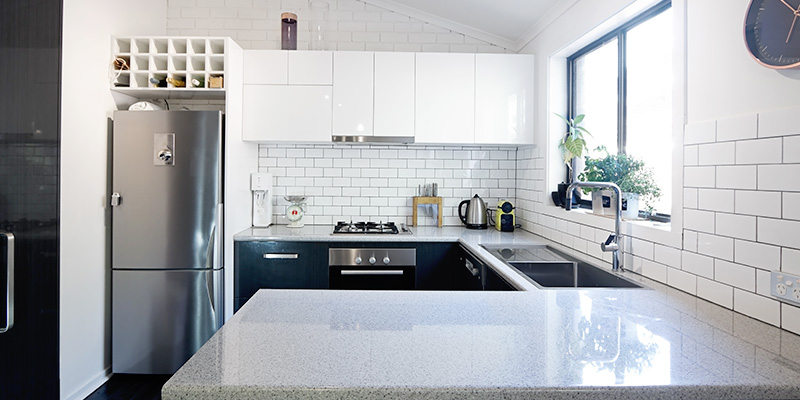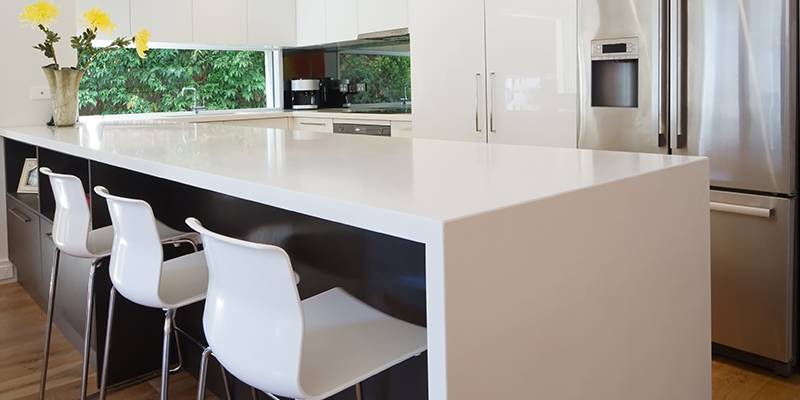2. Develop a Budget.
Start by examining your finances to decide how much you can afford to spend. Then, when budgeting out the renovation, stay slightly below your total figure to allow for any unexpected surprises that might arise. Kitchen renovations typically repay 80% to 85% of the money invested, so check the prices of houses in your neighborhood to be sure you aren’t putting more in your home than you’ll be able to recoup if you sell it.
3. Consider utility.
Think very carefully about how you use your kitchen, and what things are most important to you. That might shape the layout of your kitchen or what small features are important.
“We put in two dishwashers and two sinks in our kitchen because we like to entertain, and it makes cleanup much easier,” he says.
4. Find a Contractor.
Be sure the contractor you select is licensed to work in your area. Check with the local home builders association to see if they are reputable. They should be willing to provide references from past jobs and have a history of quality work. Communication with your contractor is as important as with the designer, so be sure you feel comfortable talking to them and that you both have a clear understanding of the work that is to be done.
5. Consider Cabinet Changes.
Replacing the cabinets is the single most expensive item in a kitchen renovation. If your budget is tight, you might consider refinishing them instead. If you do decide to replace the cabinets, you may be able to use the existing drywall if the layout of the kitchen remains the same. If major changes to the design are in store, however, the walls will probably have to be taken down to the bare studs in order to accommodate the changes in plumbing and wiring.
6. Select Countertops.
There are many choices available for countertops today from natural stone to manmade quartz to synthetic solid surface materials. The appearance of plastic laminates has improved so that they now make an attractive and inexpensive alternative as well. Stone is both heavy and brittle, so be sure the cabinets are level and there are no bumps or high spots where they meet that might cause the countertops to crack.
7. Fine-tune the Flooring.
A kitchen renovation often involves replacing the floors, though you may be able to keep the existing flooring if it is in good condition and the layout hasn’t changed. Ceramic tile is a common choice for kitchen floors and can be laid parallel with the walls or at a 45-degree angle to them. While providing a distinctive look, angling the tile will cost more due to the extra labor and waste involved. Hardwood and laminate floors can also be used in the kitchen, though is a good idea to put throw rugs in areas that receive a lot of wear. If you choose laminate flooring, be sure it is warrantied for high moisture areas.
8. Remember the Lighting.
Proper lighting is another element to consider in designing a successful kitchen. Try to combine the look you want with the light you need. In addition to standard ceiling fixtures, recessed fixtures are available that can focus light where you need it. Hanging pendant lights are perfect for over an island and provide a real design accent as well. Low profile fluorescent lights can are mounted under hanging cabinets to help illuminate countertop work areas. The various fixtures should operate independently from each other so you can adjust lighting for different occasions.









Leave a Reply